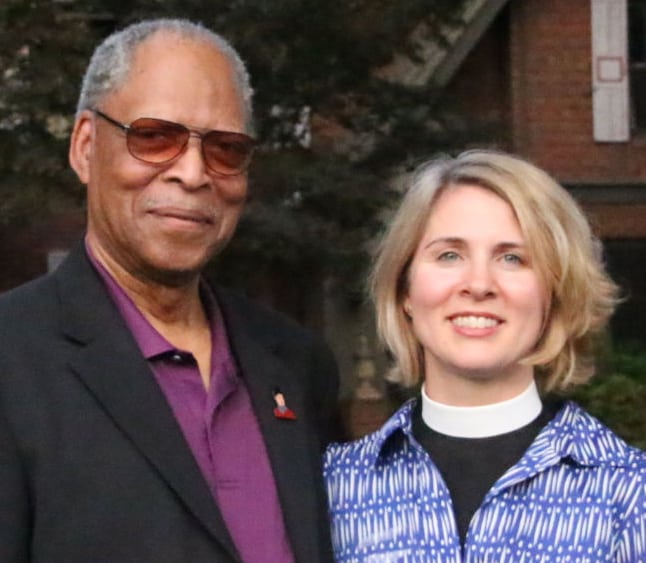by John Ashworth and Rev. Canon Laura Gettys
One hundred and twenty five years ago, on the night of July 22, 1893, law and order broke down in Memphis. A mob of several thousand attacked the jail; meeting almost no resistance from officers, they seized Lee Walker, a young African-American man.
The mob dragged Walker from his cell, beating him, stabbing him and stripping him of his clothing. They took Walker north on Front Street to an alley between Sycamore and Mill Streets, where they hanged him from a telegraph pole.
Once Walker was dead, many spectators left, but some mob members cut the body down, burned it and mutilated it for souvenirs. As a final insult to decency and to the law, the mob members left the remains of Walker’s body at the courthouse. These remains were later gathered and buried in a potter’s field.
Walker was suspected of the attempted rape of a young white woman in northeast Shelby County near Bond Station. What occurred in that encounter is unclear. It is also uncertain that Walker was the man involved. Walker was arrested several days later near New Albany, Miss. If he were the man involved, he avoided multiple posses that began an immediate search, while walking nearly 90 miles across country barefoot. Neither the alleged victim nor her sister, who witnessed the encounter, were ever given an opportunity to identify Walker.
These grounds for doubt did not deter the Memphis press from launching viciously racist attacks on Walker, calling him a “monster,” a “negro fiend,” a “black brute,” a “negro ravisher,” a “man-devil,” and a “degraded scoundrel,” among other terms. The Memphis press also predicted that a lynching would be the result of his capture. The Public Ledger ran a large headline: “RIPE FOR A ROPE.”
Walker should have been safe in the Shelby County jail, but the sheriff ordered his men not to resist the attackers. For this failure to do his sworn duty, the sheriff was indicted, along with a deputy sheriff, two police captains and several suspected mob leaders.
This attempt at restoring the rule of law failed, however, because it was impossible to seat a jury to hear the case. Only one juror out of a panel of 500 was found competent to serve, most of the others having formed a fixed opinion. One prospective juror stated that he thought the sheriff should receive a gold medal. The prosecutor gave up his attempt to hold a trial and no one was ever convicted for the lynching.
Walker was failed by law enforcement that did not protect him, by the press that vilified him, by the courts that were unable to prosecute his killers, and by the white public that tolerated the extra-legal killing of a black man on the mere suspicion that he had attempted an attack on a white woman.
Why does this matter 125 years later?
The Lynching Sites Project of Memphis believes that sharing the whole and accurate truth about Shelby County’s history of racial violence allows us to heal and grow in understanding when we openly face our history together. Ida B Wells has said, “The way to right wrongs is to turn the light of truth upon them.”
The Lynchings Sites Project is a growing network of folks who join with Bryan Stevenson and the Equal Justice Initiative to memorialize the over 4,000 known lynchings in our country, 37 of which were in our Shelby County and the largest number in our state.
This Sunday, on the 125th anniversary of the mob murder of Lee Walker, a historical marker will be dedicated near the sites of the old jail and the lynching. The marker is sponsored by the Lynching Sites Project (LSP) of Memphis, the National Park Service and the Shelby County Historical Commission.
The public is invited to the service to remember Walker and other victims of racial violence. The gathering is set for 7 p.m. at A.W. Willis and Front Street.
(To learn more about LSP, visit: lynchingsitesmem.org.)
John Ashworth is executive director and the Rev. Canon Laura Gettys is board president of the Lynching Sites Project. (Courtesy photo)




